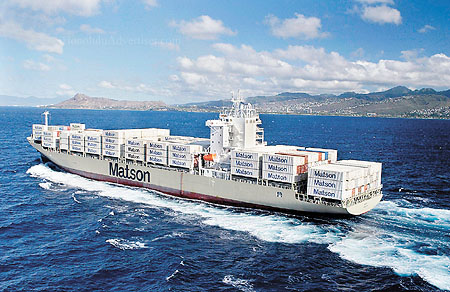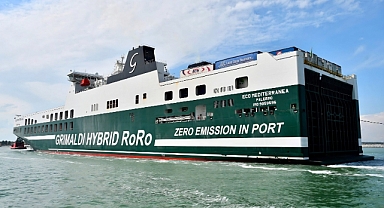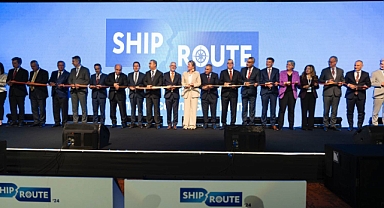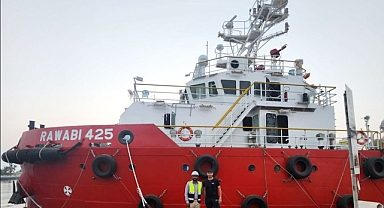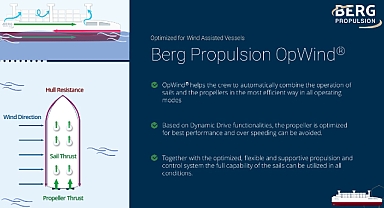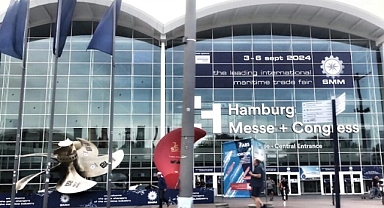Matson Q2 profit soars 81.8pc on last year's USWC labour strife
HAWAII's Matson shipping line's second quarter net profit increased 81.8 per cent year on year to US$18 million, drawn on revenues of $467.7 million, which increased 4.3 per cent.
But the company expects a 15 to 20 per cent drop in its ocean profit this year compared with 2015, when it took advantage of rivals west coast port delays.
First half operating profit rose 3.4 per cent year on year to $36.1 million, drawn on revenues of $921 million, up 8.8 per cent.
Matson found that its pricey expedited transpacific service remains popular with shippers of time-sensitive cargo such as electronics or fast-fashion, reports IHS Media.
"I would say 2016's premium is at or around the 2015. So we've not had a significant erosion in that premium," said CEO Matt Cox. "We've seen market rates go down - us with it. But that premium has endured at very, very high levels."
Matson's China-to-US express service is balanced by a westbound US domestic service from the west coast to Hawaii and Guam, which the Jones Act shields from non-US flag competition.
The service uses ships of 2,500 TEU, a quarter the size of most others on the route and a dedicated terminal at Long Beach.
Mr Cox said US importers of garments, electronics and other time-sensitive goods are still willing to pay more for expedited delivery that larger competitors with more complex networks can't match. "We continue to believe that that premium will endure," he said.
But Mr Cox admitted Matson was still affected by weak rates caused by an oversupply of competitors' larger ships. Spot rates from China to the US west coast have plummeted to about $1,300 per FEU, according to the Shanghai Containerised Freight Index.
About half of Matson's China-to-US shipments are priced at spot rates. The rest are at contract rates, which Cox said are below last year's levels, reported the Journal of Commerce.
Informal discussions with ocean carriers and beneficial cargo owners reveal that transpacific service contracts for the largest retailers dropped below $750 per FEU to the west coast and $1,500 per FEU to the east coast for the season.
Historically, contract rates were in the range of $1,800 to $2,000 per FEU to the west coast and about $3,000 on all-water services to the east coast.
In its core Hawaii trade, Matson reported an 8.4 per cent year-over-year volume increase. Matson said it expects full-year Hawaii volume to be "moderately higher" than in 2015, but flat during the second half of 2016.
Cox said the company is studying whether to order container/roll-on, roll-off ships to replace older vessels acquired from Horizon last year. Matson is building two 3,600-TEU ships at the Aker Philadelphia shipyard.
Mr Cox said integration of Horizon's Alaska service, which Matson acquired on May 29, 2015, has been substantially completed in half the expected 24 months. Matson expects in August to close its previously announced acquisition of logistics provider Span Alaska.
HAWAII's Matson shipping line's second quarter net profit increased 81.8 per cent year on year to US$18 million, drawn on revenues of $467.7 million, which increased 4.3 per cent.
But the company expects a 15 to 20 per cent drop in its ocean profit this year compared with 2015, when it took advantage of rivals west coast port delays.
First half operating profit rose 3.4 per cent year on year to $36.1 million, drawn on revenues of $921 million, up 8.8 per cent.
Matson found that its pricey expedited transpacific service remains popular with shippers of time-sensitive cargo such as electronics or fast-fashion, reports IHS Media.
"I would say 2016's premium is at or around the 2015. So we've not had a significant erosion in that premium," said CEO Matt Cox. "We've seen market rates go down - us with it. But that premium has endured at very, very high levels."
Matson's China-to-US express service is balanced by a westbound US domestic service from the west coast to Hawaii and Guam, which the Jones Act shields from non-US flag competition.
The service uses ships of 2,500 TEU, a quarter the size of most others on the route and a dedicated terminal at Long Beach.
Mr Cox said US importers of garments, electronics and other time-sensitive goods are still willing to pay more for expedited delivery that larger competitors with more complex networks can't match. "We continue to believe that that premium will endure," he said.
But Mr Cox admitted Matson was still affected by weak rates caused by an oversupply of competitors' larger ships. Spot rates from China to the US west coast have plummeted to about $1,300 per FEU, according to the Shanghai Containerised Freight Index.
About half of Matson's China-to-US shipments are priced at spot rates. The rest are at contract rates, which Cox said are below last year's levels, reported the Journal of Commerce.
Informal discussions with ocean carriers and beneficial cargo owners reveal that transpacific service contracts for the largest retailers dropped below $750 per FEU to the west coast and $1,500 per FEU to the east coast for the season.
Historically, contract rates were in the range of $1,800 to $2,000 per FEU to the west coast and about $3,000 on all-water services to the east coast.
In its core Hawaii trade, Matson reported an 8.4 per cent year-over-year volume increase. Matson said it expects full-year Hawaii volume to be "moderately higher" than in 2015, but flat during the second half of 2016.
Cox said the company is studying whether to order container/roll-on, roll-off ships to replace older vessels acquired from Horizon last year. Matson is building two 3,600-TEU ships at the Aker Philadelphia shipyard.
Mr Cox said integration of Horizon's Alaska service, which Matson acquired on May 29, 2015, has been substantially completed in half the expected 24 months. Matson expects in August to close its previously announced acquisition of logistics provider Span Alaska.









